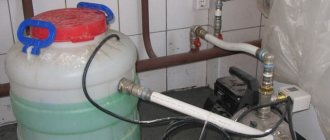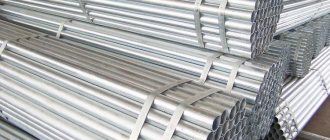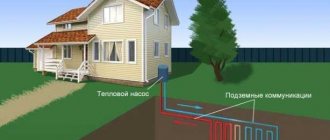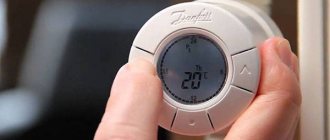What to do if the heating is not turned on for a long time
The order of appeals regarding the failure to provide a utility service or the provision of a utility service of inadequate quality is the same. It is detailed in the article about the problem.
But the essence of such appeals is different. If the problem of hot rusty water can be regarded as a certain discomfort, then the increasing cold outside the window, and after this, the cold snap in the apartment does not dare to call the language an ordinary household inconvenience. Therefore, the emphasis of all your statements should be made on a direct threat to health, the inability to avoid hypothermia, as a result of the lack of heating in the apartment.
The transfer of heating / heat supply systems to summer mode / heating is turned off only after the order of the person responsible for housing and communal services and utilities (deputy mayor for these issues) has been adopted and signed (at least in our region of the Volga region, as our regional media informs us ). This takes into account three factors:
- Season / time of year - heating systems will not be turned off in December, January or February. Heating systems are turned off in the spring - from early April - to mid-May (depending on the region)
- Weather forecast. The decision on the end of the heating season is made by the relevant persons in accordance with forecasts of weather forecasters, taking into account the likelihood of sudden cold snaps (with projected prolonged frosts, the timing of heating shutdowns is postponed).
- Outdoor temperature - if the average daily temperature for at least 5 days is +8 degrees and above. The transfer of heating systems to the summer period (shutdown of heating systems) must start from the next day after this (5-day) period.
To turn off the heating, the ambient temperature must be + 8 for five days. Or you can calculate the day of the shutdown yourself. It is necessary, starting from the day the heating is turned on, add the heating period of your region to this day. Get the exact day the heating will turn off in your area. The heating period is the number of days during which heating is supplied to apartments and other buildings. For example, for Moscow - the heating period is 145 days, for Cape Chelyuskin - 311 days.
All heating periods in Russia can be found on the website.
As far as I know, heating is turned off when the average daily air temperature outside reaches eight degrees Celsius. But very often I notice that in fact, this is not entirely true. Typically, the heating season ends in April, when the average daily temperature significantly exceeds the established norm.
District heating principles
The centralized hot water heating system is the most popular option for supplying heat to apartment buildings. The supply of heat energy is made from the CHPP through heat networks and in-house communication systems.
View this post on Instagram
In connection with the onset of a cold snap, the heating season in Saratov will continue. The decision on its completion will be made by the municipality after the average daily outdoor temperature for five consecutive days will exceed +8 degrees Celsius. Despite the fact that the schedule of scheduled tests of heating networks has already been signed and agreed by the city administration, their timing will be adjusted depending on the end date of the heating season.The energy company's specialists have already sent notifications about the cancellation of previously planned events related to the shutdown of hot water supply. To date, all power facilities and heating networks continue to operate according to the winter scheme. # tplussaratov # tplus # heating season # heating # Saratov64
A post shared by Saratov Branch "T Plus" (@tplussaratov) on Apr 15, 2020 at 6:41 am PDT
Controlling the maintenance of an optimal microclimate helps to implement the heating temperature schedule. It is compiled on the basis of the following indicators:
- temperature in the water supply and outflow pipes in the heating system and the difference between them;
- indoor and outdoor temperature.
The colder the air outside the window, the higher the temperature of the water in the battery should be. The heating schedule is needed to adjust the power of the equipment when weather conditions change.
With its help, several tasks are solved at once:
- energy consumption is optimized;
- the optimal level of temperature in the room is maintained;
- the costs of citizens to pay utility bills are reduced during the heating season.
The heating schedule must be attached to the service contract with the housing and communal services or RNO.
The beginning of the heating season in the regions of Russia
The heating season is the period in which heat is supplied by the district heating system. Previously, heating activities were given six months - from 15 October to 15 April.
However, due to the difference in weather conditions in different regions, it was decided to determine the date of turning on the heating system, based on a combination of the following factors:
- average daily temperature;
- weather forecast for the near future.
If within five days the average daily temperature does not exceed +8 ° C, the district administration adopts a decree on the opening date of the heating season. The timing can be adjusted in case of forecasting warming.
Time range for switching on district heating systems by region:
| Region | Start dates for the heating season |
| Nenets Autonomous Okrug, Omsk, Arkhangelsk, Murmansk regions | Beginning of September |
| St. Petersburg | Mid September, early October |
| Moscow and Moscow region, Central Chernozem region | Early October |
| Southern regions * | Mid October, end of November |
* In the city of Sochi, only 3 months are given for the heating season. In this region, heating is turned on in mid-November and turned off at the end of February, early March.
Heat is supplied to objects in the following order:
- kindergartens, schools, hospitals and other buildings of social importance;
- administrative and industrial buildings;
- premises of the housing stock.
Interesting! In houses with autonomous heat transfer systems, the start and end dates of heating activities are set by the decision of the owners.
Features of the end of the district heating season
The heat supply is stopped if the average daily temperature is more than +8 ° C for five days. However, due to the instability of weather conditions, management companies prefer to play it safe and are in no hurry to turn off the central heating, because restarting the system is a very labor-intensive undertaking.
The start and end dates of the heating season are determined by the municipal, not the utilities. The municipality sends an order to the CHP, which, in turn, notifies the timing of turning on and off the heat supply to the housing and communal services and management companies.
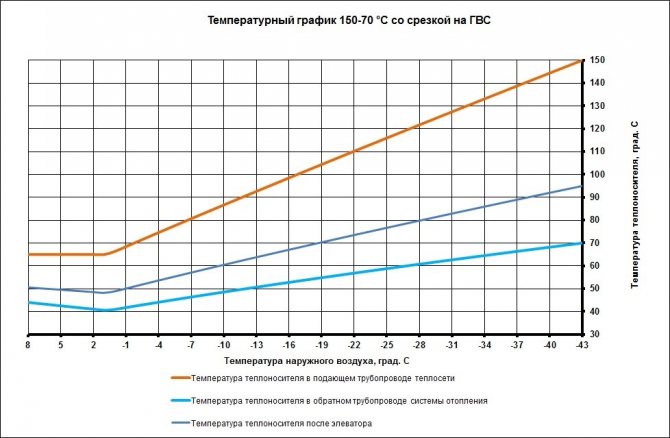
The regulation on the heat supply schedule is published on the website of the district administration. If heating is not included on the dates indicated, this may serve as a precedent for a complaint.
Reasons for the untimely start of the heating season
It would seem that with such good legislation, a responsible attitude of utilities to their duties, there is no reason to doubt that heating in our apartments will be turned on this year as well. Why is it that especially impressionable citizens regularly annoy officials with numerous complaints and incomprehensible questions about what they say they are freezing and when they will turn on the heating?
Unfortunately, there are enough reasons to doubt the timeliness of the heat supply, I will list only a few:
Ordinary bungling, imposed on force majeure. An example, from the Vologda region, where an entire village in November 2020 was left without heating. The reason is that they could not bring fuel to the local boiler house because of the washed-out roads. According to the logic of local authorities, fuel delivery requires the soil to freeze for 2 weeks at minus 10-15 °. Here is such a vicious circle, it turns out that in order to keep warm, you first need to freeze.
Such cases, despite their absurdity, they often happen every year and there is no complete certainty that something similar will not happen the next year in your city, with your home.
If you follow the fifth point of the mentioned decree and the unpredictable oddities of the weather exactly, then the supply of heat, on quite legal grounds, will easily be postponed until early November. For example, the air temperature in Perm on October 16, 2020, day and night was + 10 degrees, although it was + 3 ° C at night on September 11, and if the Perm authorities followed the instructions exactly, and not common sense, the Perm residents would wait for the heat in their apartments no earlier than 23 October.
There are frequent cases when, during the so-called preparatory period, no one prepared anything, and winter came, somehow unexpectedly again. Sad but true! An emergency patching up of problem areas begins, the search for resources of which is not available in life, but gradually everything, in some miraculous way, comes back to normal. But the citizens had to freeze again for a month or two, but this is the cost of the harsh Russian climate.
It is easiest to scold officials from housing and communal services, they are almost disembodied in their inaccessibility and isolation from the needs of the administration, but most often the reasons for poor-quality heat supply are much closer and in order to solve them, it is not necessary to communicate with the President. The goodwill of the residents of the house and the willingness to fix problems on their own is enough.
Heating technical problems
Low intrasystem pressure and, as a consequence, poor circulation of the coolant. The malfunction occurs due to the increased hydraulic resistance of the system, or, more simply, clogging of pipelines, filters, valves.
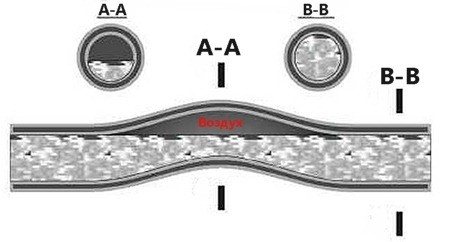

- Periodic airing. It is possible that the reason for the occurrence of such a malfunction was laid down at the design stage or was admitted during installation work.
- Insufficient coolant temperature. Most often, the loss of temperature occurs due to insufficient thermal insulation of the heating main, but it may very well be that the heat load for heating was initially calculated incorrectly.
- Imbalance and illiterate adjustment of the heating system.
Not all problems with heat supply are associated with the development of the resource of the in-house heating system. Sometimes, the residents of the house themselves become the culprits of the malfunctions. Rather, only a part of them. Particularly advanced citizens, consciously or unconsciously, change the design of the system, disrupting the uniform distribution of heat on all floors. Here are typical examples of homemade products:
- Increase in the number and (or) area of radiators.
- Connection of additional heating devices. Water underfloor heating, indirect heating water heater.
- Installation of an additional radiator for heating the balcony, loggia.
Temperature standards for heating radiators in an apartment
- When using two pipes for hot water supply, the maximum permissible temperature is + 95 ° C.
- When a single-pipe structure is used in a building, the temperature of the water in the heating system of an apartment building, according to GOST, should be no more than + 115 ° C.
In order not to overpay for the resource not provided, an individual heat meter should be installed in the apartment. Battery thermostats are also relevant for indoor climate control. In this case, the owner will not have to measure the heating level of the coolant inside the radiator.
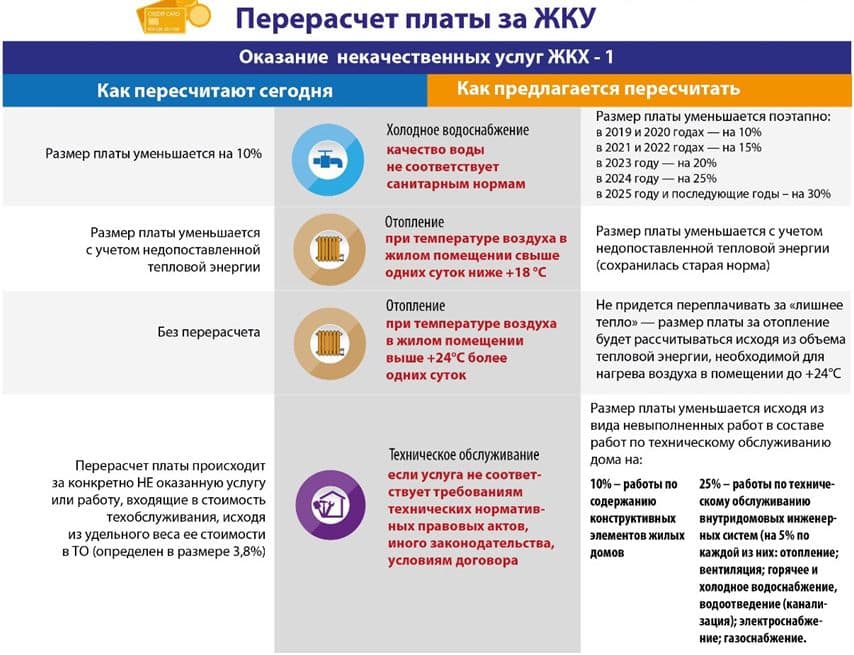

Recalculation of fees for low-quality housing and communal services.
If it is not technically possible to embed a thermostat and an individual metering device, then the only way out is to install a common meter for the entire MKD (ODU).
In the case when the temperature in the heating system of an apartment building stays above + 100 ° С for a long period, it should be signaled to the UK and the local CHP. Ignoring the situation will lead to boiling water, which is fraught with a pipe break.
The heating level of the battery can be measured at home by attaching an ordinary thermometer to the radiator. To the obtained value, add 2 ° C - for more accurate measurements, an infrared thermometer is used.
What should be the average daily temperature for the start of the heating season
The temperature schedule for supplying coolant to the heating system directly depends on weather conditions. The start and end times of the season are influenced by the average daily thermometer.
The indicator is calculated based on measurements of street temperature every three hours throughout the day. Then all indicators are summed up and divided by 8. Measurements are carried out for five days in a row.
The average daily temperature level according to the current standard for all regions of Russia is 8 ° C.
At what temperature the heating is turned off
In order to make a decision to turn off the heating, the State Committee of Meteorologists takes average daily measurements of street temperature.
The procedure is carried out according to the principle: every three hours during the day, the level of the environment is recorded. The results are summed up and then divided by the number of measurements in 24 hours. As a result, the average daily temperature is calculated.
If, as a result of the operation, the indicator is higher than 8 ° C, then an official decree is drawn up, which is sent to the municipal authorities of the region. The administration, in turn, endorses the decision and sends a mailing to the heads of local thermal power plants and housing and communal services.
Legal framework on turning off and on heating in an apartment
The regulatory framework for the heating mode in MKD is collected in GOST 30494 of 2011 (in the latest edition of 2020). The document reflects the required water temperature in the heating system.
The commencement of preventive maintenance of heat supply utilities is enshrined in Federal Law No. 190 / FZ of July 27, 2010 with the latest amendments in 2020. The law outlines the area of responsibility of communal structures servicing apartment buildings.
Questions on the current repair work of the main and additional water heating systems are disclosed in the RF PP No. 354 (with the latest changes in 2020). In addition, there is a clear list of force majeure situations when it is allowed to interrupt the supply of heat to living quarters.
SNiP
The collection of legislative acts that regulate construction standards is called SNiP. According to SP 60.13330.2012 SNiP 41-01-2003 and SP 60.13330.2016 SNiP 41-01-2003, living quarters should be equipped with ventilation, heating and air conditioning.
In accordance with SP 131.13330.2012 SNiP 23-01-99, when building apartment buildings and individual residential premises, building climatology must be taken into account.
SNiP 41/01/2003 of 2004 indicates the mandatory observance of the temperature level in heating radiators.
GOST
To understand what should be the heating temperature in an apartment, you need to familiarize yourself with the regulatory documents on the current standards.
- GOST 55656/2013 entered into force on July 01, 2020. The position indicates the energy characteristics for different rooms. An example of calculating the required energy for heating buildings is also given.
- Rosstandart Order No. 1211 of October 25, 2013 approved nationwide standards for metrology and technical regulation.
The long-awaited warmth in the apartments - what awaits us every year
Owners of housing in apartment buildings are constantly tormented by the question of when the heating season will begin this year. There are strict technological criteria for the operation of district heating, which heating companies are forced to comply with. On the basis of the approved SNiP, a budget item is formed, into which state funds are spent, spent on heating utility facilities and housing stock. Depending on the duration of the heating season, corresponding fuel reserves are created at the CHPP, a schedule of planned preventive measures in the maintenance of heating mains is being built.
In theory, the main parameter that utilities pay attention to in the process of preparing a new heating season is a steady decrease in the ambient temperature. If for a long time the average daily temperature outside does not exceed 10 0 С, one should expect a long-awaited warming of the microclimate in apartments.
However, this is in theory, in practice, everything is much more complicated.
For example, in the Arkhangelsk region, the cold season begins a month earlier than in central Russia, not to mention the southern regions. According to weather forecasters, the temperature in September can be 15-17 0 С, for example, in Moscow and the Moscow region, while in the Urals and Western Siberia this figure can drop to 8-10 0 С. In each case, utilities expect accurate forecasts from weather forecasters , focusing on their data in determining the expected date of the start of heat supply to the heating plant.
Prolonged Indian summer, unforeseen warming in the middle of autumn, can make significant adjustments in the timing of the start of heat supply to city apartments. Each year brings surprises in this regard, especially considering the constantly changing climate on our planet. A sharp cold snap in September can be replaced by unexpected warmth in October, when everyone is eagerly waiting for the heating to be turned on. In this case, confusion arises. Sometimes the energy company - the entity that supplies heat to your homes, despite the warming, turns on the heating on time. Then it gets hot in your apartment, like in Africa. You are forced to open the vents and ventilate the apartment, wasting precious heat to nowhere.
And vice versa. In a situation where the next warming has pushed back the timing of turning on the heating, you enjoy the warmth outside, and the cold comes again unexpectedly. In this case, both you and the heat supplier will be caught off guard. Sanitary rules and regulations in this case are the main documents for public utilities that give the right to start centralized heating. Otherwise, for violation of the approved norms, heat and power companies may be held administratively liable.
Where to call
hydraulic tests in a hot water settlement
According to Russian legislation, namely, Article 5 of the "Rules for the provision of communal services to owners and users of premises in apartment buildings and residential buildings": "The heating period must start no later than and end no earlier than the day following the day of the end of the 5-day period, during which, respectively, the average daily outside temperature is below 8 degrees Celsius ...
»Thus, the start of the heating season depends on the weather conditions.
The approximate period for the beginning of the 2016/2017 heating season in Moscow is October 4-10, 2020.
Heat supply procedure
Two weeks before the heating is turned on, test runs are carried out in order to identify breakdowns and leaks. The first, where the launches are carried out and the first to turn on the heating are social facilities: hospitals, schools and kindergartens. After the start of the heating season at these facilities, heat is supplied to the residential sector (apartments).
What should be the temperature in the apartment? Legal requirements
According to the "Rules for the provision of utilities:
- In residential premises, the temperature should not be lower than +18 ° C
- In the corner rooms of living quarters, the temperature should not be lower than +20 ° C
- In the kitchen - not lower than +18 ° C
- In the bathroom - not lower than +25 ° C
- In the toilet - not lower than +18 ° C
- At night (from 00.00 to 5.00) the air temperature in the apartment can drop by no more than 4 ° C
- In the daytime, temperature drops below the standard level are not allowed
How to correctly measure the temperature in an apartment?
It is necessary to place the measuring device in the center of the room, at the intersection of the diagonals between the corners, at a height of 1 meter from the floor.
Requirements for an allowable interruption in the supply of heat in accordance with the "Rules for the provision of communal services to owners and users of premises in apartment buildings and residential buildings":
- No more than 24 hours (in total) within 1 month
- No more than 16 hours at a time - at an air temperature in residential premises from + 12 ° С
- No more than 8 hours at a time - at an air temperature in residential premises from + 10 ° С to + 12 ° С
- No more than 4 hours at a time - at an air temperature in residential premises from + 8 ° С to + 10 ° С
For each hour of exceeding the permissible duration of the heating break, calculated in total for the billing period, the amount of the utility bill is reduced by 0.15%.
Authorities for filing a complaint in the absence of heating
In case of problems with heating, improper quality is recorded or the batteries are cold, do not neglect the rights of the consumer. You should complain to the authorities.
The filing of claims is carried out sequentially, that is, without writing an application to the Criminal Code or housing and communal services, it is useless to apply to the prosecutor's office. Only after receiving refusals or on the fact of inaction, it is allowed to send claims to higher authorities.
The list of oversight agencies is presented on an increasing scale:
- Housing and communal services, ZhSK, UK or HOA;
- Housing inspection;
- Russian consumer supervision;
- communal department of the settlement;
- local heat and power plant (CHP).
Sample complaints can be downloaded here:
- The inaction of utilities.
- The complete lack of heat supply.
When resolving heating problems, owners should rely on the current standards for supplying and disconnecting heat in apartments. It makes no sense to enter into a conflict with the management company or RNO, if the room is not thermally insulated. The experts also point out that there must be grounds for filing a complaint about insufficient heating or heat.
It is the responsibility of the residents to monitor the temperature in the apartment and the degree of heating of the radiators. In case of deviations from the norm, the management company or the MKD board of directors should be reported.
Watch the video: “The best way to heat when there is no gas. On the example of Finland. "
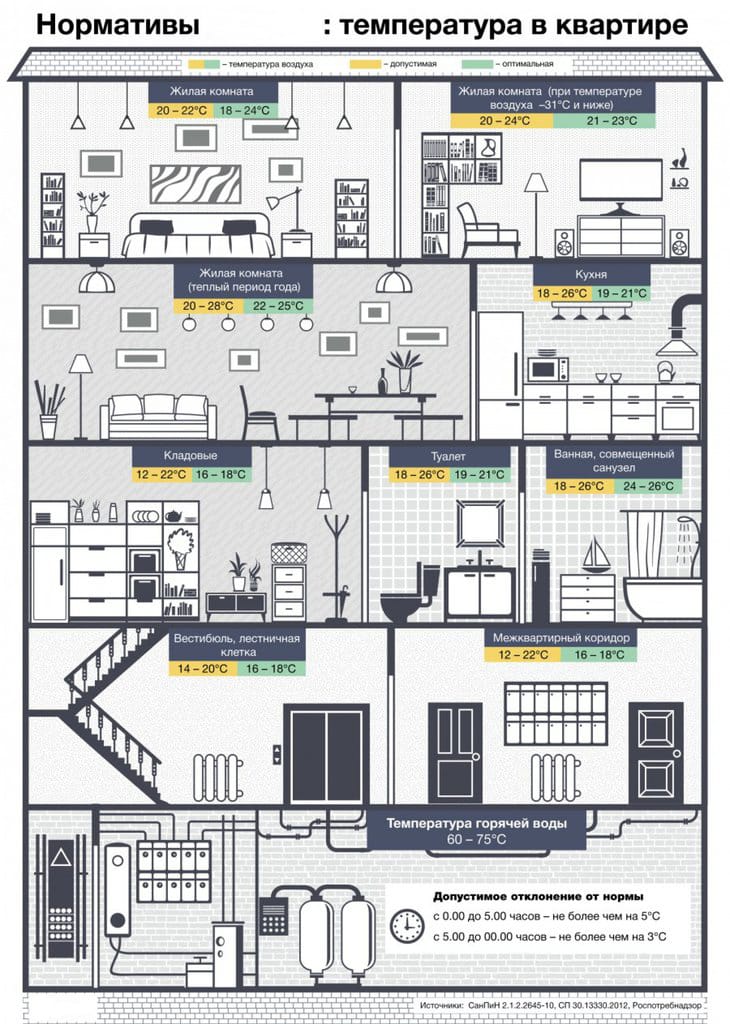

Free consultation by phone! Moscow and region:; St. Petersburg and region:
Is it possible to turn off during the heating season
Accidents on heating mains are not uncommon. Such force majeure, as a rule, entails the shutdown of hot water supply and heating. The legislation provides for the norms for a one-time shutdown of heating, which must be observed.
Heating cut-off rates in season:
| Indoor temperature in ° С | Shutdown time in hours |
| +12 | 16 |
| +10 to +12 | 8 |
| +8 to +10 | 4 |
Important! If the owner of the apartment proves that the temperature in the room does not meet the approved standards, he can demand material compensation in the amount of 0.15% of the monthly heating fee for each hour of violation.
How to heat an apartment in the off-season
A lot of time can pass before the average daily temperature reaches the conditional level at which the CC is obliged to turn on the heating. In autumn, the sun does not warm up the walls very much, and with the onset of darkness they quickly cool down, sucking the heat out of the room. You can heat the apartment while waiting for the start of the central heating using additional equipment:
- oil radiator;
- fan heater;
- air heating unit.
Double-glazed windows or budgetary, but quite effective, gluing of windows for the winter will allow you to save heat.
What to do if there is no heat in the apartment
After the onset of winter cold weather, the temperature of living quarters should not fall below +18 ° C. If the heating system cannot provide the temperature regime stipulated by GOST, the owner must immediately notify the emergency dispatch service of the presence of violations. The application is accepted by phone or in person. In both cases, the dispatcher must provide his details and record the time of receipt of the complaint.
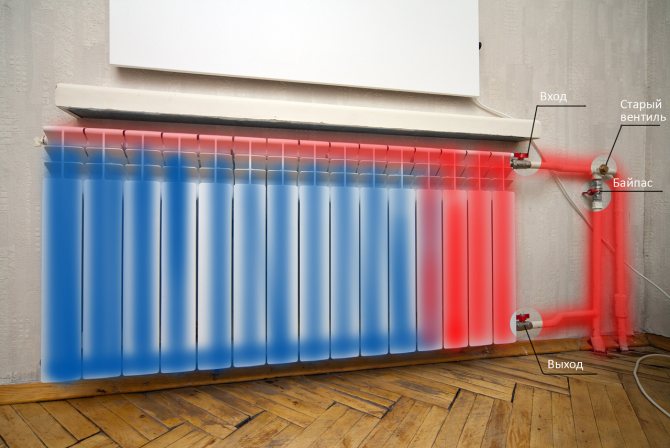

On the fact of the appeal, an examination is carried out. If the owner of the apartment has not determined his time for its holding, then the check is carried out within two hours after the receipt of the application.
Based on the result of the inspection, an act is drawn up, in which the following information is indicated:
- measurement methodology;
- used tools and devices;
- identified violations or the fact of their absence;
- date and time of the inspection.
If the results of the inspection by the Criminal Code do not satisfy the owner, he has the right to demand a re-examination with the participation of members of the GZI and a public association of consumers.
How to determine the average daily temperature
The average daily temperature is determined as the arithmetic average of all measurements made in 24 hours. To calculate it, you must perform the following steps:
- take air temperature measurements with an interval of 4 hours (the interval can be any);
- add all values;
- the amount received is divided by the number of measurements.
The result will be the average temperature for the day.
Where to Complain if Batteries Remain Cold
In the absence of heat, apartment owners can apply to one of the organizations responsible for house maintenance:
- management company;
- housing and communal services or RSO service;
- housing inspection.
If contacting local government bodies does not bring the desired result, you must file a formal complaint with higher authorities:
- local administration;
- Rospotrebnadzor;
- the prosecutor's office;
- court.
Official appeals can be left on the websites of the above organizations.
At what temperature the heat supply is turned on
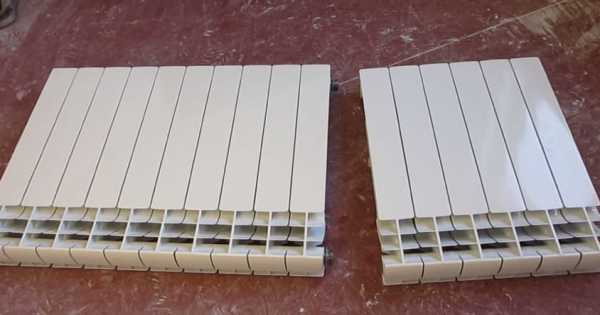

Often consumers ask themselves the question, at what actual temperature should heat supply be turned on?
By the decree of our government of 23.06.2006, about the procedure for presenting housing services to citizens. The very beginning of the heating time is considered when the average ambient temperature per day is less than plus 8 degrees Celsius for five full days in a row.
So at what temperature do they provide heat supply !?
According to the above act, at temperatures less than plus eight and if the temperature is held for five days in a row, or with the very beginning of the heating period from October 15 to April 15.
Also, it will be useful to get acquainted with the norms of the temperature regime from the sanitary and epidemiological service, which must be in the premises for housing:
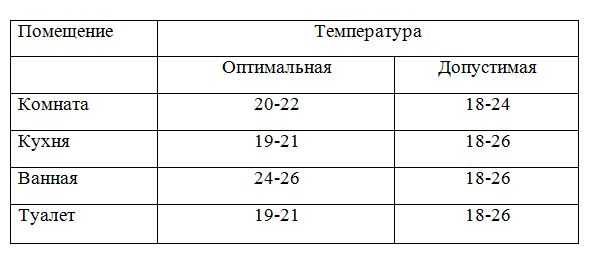

Very often the heat supply in rural houses is poor.Thanks to this, you need to try the traditional heating of a country house.
Also read: My recommendations for choosing heating pipes
Traditional heating is a good substitute in a private home
How do you carry out traditional heating? To install traditional heating you will need:
- heating batteries,
- pipes for connecting heating components,
- boiler for water
- and much more.
You can buy all this in our company.
We advise: Detailed instructions on how to build up the battery
Recommendations and Tips
- It is necessary to install water boilers closer to the living quarters, many people install boilers, as a rule, in the kitchen room, some make a specialized extension to the kitchen room, where the boiler is located.
- Based on the above, the boiler in a conventional heating system must be installed below the heat dissipators. This will increase the pressure cycle in the system, which in turn can make your home more cozy and warmer.
Note on the topic: 5 rules for filling the heating system
What to do if you have problems?
If you have problems with cold winters and low temperatures in your home. If the purchase and installation of traditional heating puts you in a difficult position, from which it is difficult to find a way out. Contact the specialists of our company, and they will install warmth in your home very quickly and with the highest quality.
Our company is ready to provide all services for the installation and connection of traditional heating of houses.
Heating in the off-season
The off-season in the heating plan is the time between the heat cut-off in the spring and the return of the hot water supply to the pipes in the fall. The weather is unpredictable, so a sharp cold snap can occur at the end of spring. In some regions, frosts continue until May.
The state does not have the ability to open and close the valves of the CHP plant at the request of the people. Therefore, under normal conditions it is necessary to resort to additional means of heating the premises. Most often they use electrical appliances, less often gas ones.
In some private houses, additional heating takes place with the help of a wood-burning stove and stoves.
Alternative for multi-apartment buildings - liquid fuel air heaters, as well as:
- Oil-based radiators and convectors. Cons - high consumption of electrical energy. Plus - heats the room with high quality and maintains the set temperature for a long time after disconnecting from the network.
- Fan heater - they will quickly heat the room, but when the power is turned off, it also cools down. The main disadvantage is that it dries the air in the apartment.
- The air conditioning system is expensive, but reliable and durable. By installing a split, the owner solves two problems. In the summer, you can set the optimal coolness in the house, and in the winter you can warm up (but only when the temperature outside is down to -5 ° C). Experts recommend choosing energy efficient models to reduce your electricity bills.
For your information: installing underfloor heating in apartments and houses can also solve the problem with heating in the off-season.
Important points to turn off and turn on heating
Immediately with the beginning of spring warming, many residents of the capital and other cities are beginning to be interested in the real days when the heating is turned off. The following points are important here:
- Average daily temperature - this value takes into account all temperature indicators, both during the day and at night. To turn off the heating, it is necessary that the indicator is not lower than + 8 ° C and remains at this level for at least 5 days. If this condition is met, it can be expected that the centralized heating will be turned off.
- Stability of temperatures - if the condition is met, and forecasts of weather forecasters say that frosts are not expected in the region, then the city authorities may decide to turn off the heating.This decision is communicated to the district authorities, and they are already informing the housing and communal services and giving an order to turn off the heating.
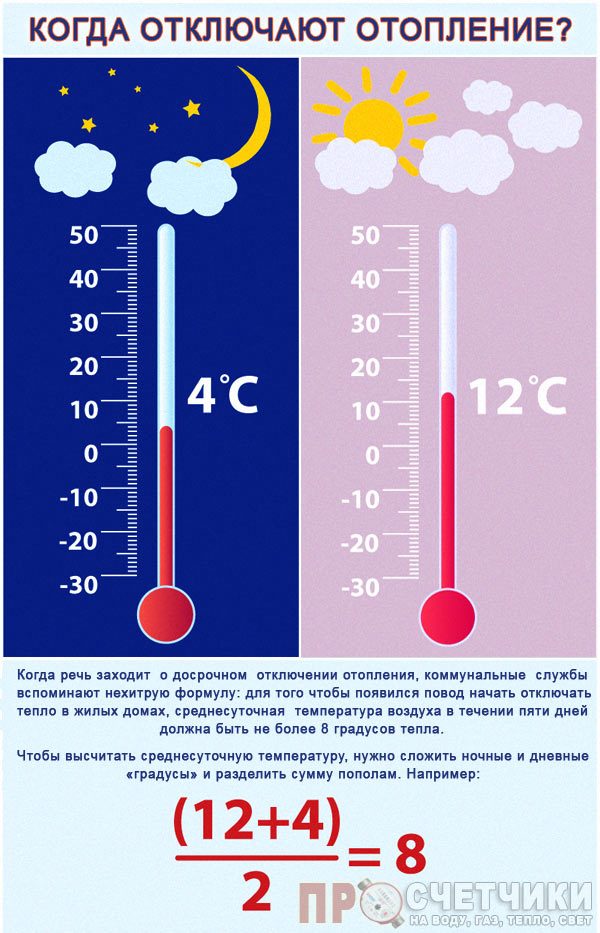

The end of the heating season and the cessation of heat supply to consumers are associated with significant financial and human resource costs. The feasibility of such a decision is determined by the city authorities, focusing on average daily temperatures and forecasts of weather forecasters for future periods. These indicators are objective, and no others will be taken into account when the heating is turned off.
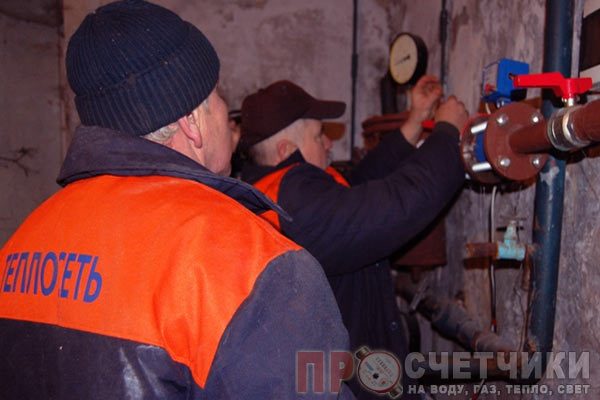

There are a number of objective reasons that indicate that untimely shutdown of centralized heating is not a rational measure. The main of them, experts include:
Features of operation of heating mains and CHP
It is important here that in order to start centralized heating, all the necessary indicators must be brought to a certain level, which is set by specialists. In addition, you should create the desired difference between pipelines of different levels.
And, if in summer it is either completely absent in heating mains, or the level is minimal, then in winter the pressure was recorded at 6-7 kgf / cm² with a supply of 3-4 kgf / cm² to the opposite. For sufficient heating of the coolant and creating a proper drop, significant energy resources are required. Moreover, this process takes quite a long time. For example, for heating only for a small city, thousands of cubic meters of coolant pass through heating mains. It follows from this that it is simply physically impossible to supply heating promptly (within a few hours after forecasters' forecasts). The end of the 2020 heating season, however, as well as the beginning of the next one, according to the order, must be accompanied by the appropriate service organizations, since these procedures are associated with an increased accident rate. For these reasons, it is advisable to plan in advance and prepare a work plan for maintenance personnel. All employees of such organizations during this period have to work, almost in an emergency mode. It is quite natural that a vacation schedule should be formed taking into account this moment in such a way that engineers and locksmiths at the time of starting / turning off the heating are in full force.
What is the heating season
The heating season lasts from the time the utilities turn on the heating until they turn it off. This gap usually begins in the fall and ends in the spring. However, the exact terms are regulated by the relevant authorities.
Heating is supplied through central pipes. There are such constructions in every home. To make it easier for you to understand how central heating works, we suggest that you familiarize yourself with its process in more detail.
How is the process of heating apartments:
- The apartments are heated by piping. Pipes run from the city central boiler house and go to houses and apartments. Here the coolant is water.
- Also, houses can be heated by heat and power plants. In this case, electricity and steam are used as heat carriers.
- The coolant is supplied through a developed pipe system. The pipes run in two rows. According to the first, the coolant enters the apartments, according to the second, it returns from them.
- In apartments, heat is distributed through pipes.
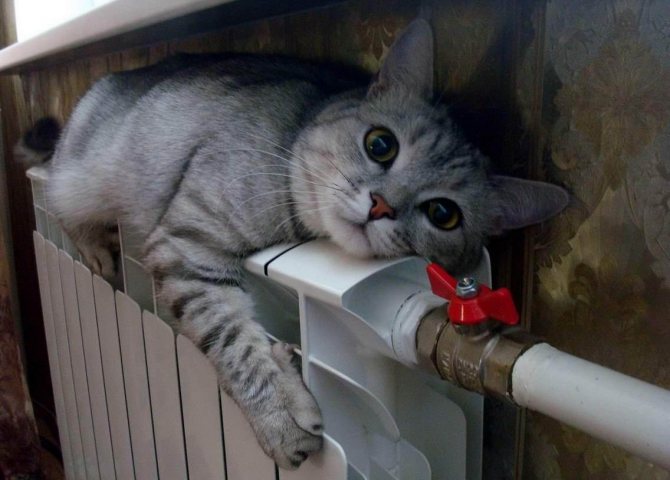

This system has central heating. With its help, multimillion cities are heated. However, you have to pay for such services.
When will they give heating in 2020 in Moscow this year, the heating season will begin in October
There is a certain instruction, following which the housing and communal services begin the heating season. There are certain prescriptions according to which the heat in houses must appear until October 15 inclusive.There is also a list of institutions, (for example, municipal buildings, schools, kindergartens, hospitals, and so on), the inclusion of heating in which begins earlier than the established deadlines. Also, utilities are guided by the basic principle, that is, they turn on heating if the daily temperature is kept for five days at or below plus 8 degrees Celsius.
With all this, one prescription contradicts another, because if after October 15 the air temperature is higher than plus 8 degrees, the heating will not be turned on yet, since this is not profitable for service providers.
Also, utilities are obliged to supply heat to our houses on behalf of the mayor of the city, as happened last 2020.
If we take into account the statistics, then the heating season in the capital starts from October 1 to October 15. A little earlier than this period, municipal institutions begin to receive heat, and after them administrative buildings.
Start and end of the heating season
Now you can go to what date the heating season begins and when it ends.
Heat appears in houses if two conditions are met:
- The time of year has arrived. Heating is usually started from October 1st to October 15th.
- The average daily temperature is less than +8 degrees for five days. Of course, a prolonged cold snap can also occur in the summer, but no one will start heating for just a week - this is simply inappropriate. But it is also not wise to delay the heating season, because if the system freezes over, you will have to spend a lot of financial resources and time on emergency recovery work.
When heating is turned off, three factors are taken into account:
- Season. Heating is usually turned off between April and mid-May, depending on the region.
- Weather forecast. Before deciding to stop the heating systems, a weather forecast is viewed - if a strong cold snap is expected in the coming days, then there will be no shutdown. In addition, if there are prolonged frosts, the heating is also not turned off.
- To end the heating season, the average daily temperature must be more than +8 degrees. Moreover, this parameter should be observed over the past five days.
Ways to heat your home in the off-season
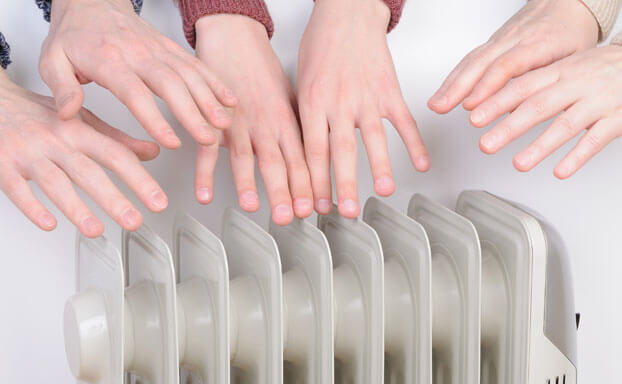

Fan heaters allow you to quickly heat even a large area, and at the same time they consume a small amount of electricity. Since they do not take up much space, it is convenient to store them when they are not needed, even in a small apartment. However, it should be borne in mind that their use worsens the air quality - due to the oxidation of the spiral material and the combustion of dust, the oxygen content decreases (about
What to do if it is warm outside and the heating is not turned off
It should be borne in mind that stopping the heating equipment for summer mode cannot be done instantly. Heating is turned off in a specific sequence. First of all, the heat supply of administrative buildings and industrial facilities is stopped. They are followed by residential apartment buildings, and only in the last turn are the batteries in schools, kindergartens and other social institutions turned off.
However, there is some injustice in all of these rulings. At a time when it is already warm outside and the temperature of the pipeline is reduced to a minimum, residents are forced to pay the heating bill in full. You can find a way out of this situation by installing meters on heating devices.
It is also possible to turn off the heat on an individual basis ahead of schedule. To do this, you will need a collective application and the consent of all residents of the house, which is provided to the organization supplying heat to your region. Only then is the shutdown performed.
Preparing the housing stock for the 2017-2018 heating season
Comprehensive preparation of housing and communal services facilities for seasonal operation is regulated by the regulatory requirements for people's living in the autumn-winter period.
- elimination of cracks and holes in the outer walls, basement, attic floors, roof and places of their docking with each other, windows or doors;
- restoration of plastering, roofing, etc .;
- tidying up technical rooms;
- checking the integrity of window and door fillings, door closers and porches;
- conducting trial fireboxes of central heating and stoves;
- ensuring the drainage of atmospheric and melt water from the slopes into the basement, window pits;
- checking the quality of waterproofing of foundations, basement walls and basement;
- checking the operability of heating furnaces and installations with gas heaters, chimneys, gas ducts, internal systems of heat, water and power supply.
Based on these recommendations, as well as the shortcomings identified as a result of the spring inspection of the apartment building and its engineering systems, the management company or HOA develops a plan of measures for preparing for the heating season and approves it in local government bodies.
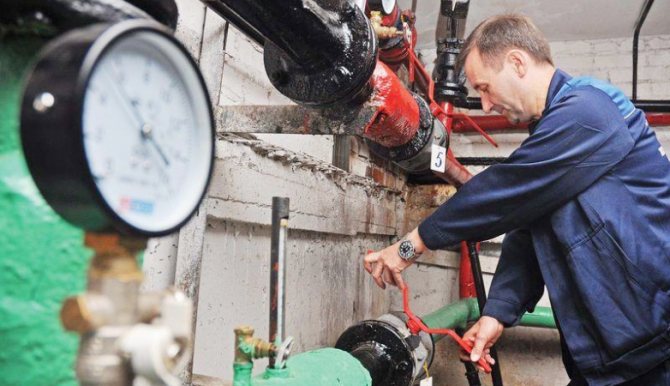

The preparation plan for the heating season of the management company, in addition to technical work, includes a number of organizational measures:
- retraining and advanced training of employees providing operation and emergency repairs of boiler houses, heating points, engineering systems;
- instructing emergency service workers, maintenance workers, janitors;
- technical inspection and maintenance of vehicles, communications, equipment, tools, cleaning equipment, inventory;
- preparation or restoration of diagrams of in-house engineering systems;
- audit of heating units, operability of metering devices (with replacement, if necessary), certification of the integrity of the seals.
In addition, management companies and homeowners associations, when preparing for the heating season, must take into account other requirements of Rules 103:
- the degree of readiness of heat-consuming installations for operation and their provision of the mode of consumption of heat energy specified in the resource supply agreement;
- no debt for the supplied heat energy, heat carrier;
The main problem in preparing for the heating season is the highest level of consumer debt for the supplied energy resources. The debt in the housing and communal services sector is more than one trillion rubles, of which 800 billion are debts of management companies to resource supplying organizations.
Mikhail Men, Minister of Construction and Housing and Utilities of the Russian Federation
In accordance with the Rules for the maintenance of common property in an apartment building (approved by Decree of the Government of the Russian Federation of August 13, 2006 No. 491), the responsibilities for preparing in-house engineering systems for seasonal operation are assigned to the owners of residential premises of an apartment building (in the case of direct management) or HOAs and managers companies. Financing of events is carried out at the expense of the owners.
Alternative Boiler House Law
As for the preparation of the heating network for the 2017-2018 heating season, control over it will be entrusted to new structures - unified heat supply organizations (ETO).
On July 31, 2020, President Putin signed the federal law "On Amendments to the Federal Law" On Heat Supply "and Certain Legislative Acts of the Russian Federation on Improving the System of Relations in the Field of Heat Supply".
The document, which received the popular name "The Law on" Alternative Boiler House ", changed the system for regulating heat tariffs. The new model provides for the establishment of a ceiling price level for the heat carrier, which is called the "alternative boiler house". This is a calculated indicator. It corresponds to the cost of one gigacalorie of thermal energy in case consumers want to build their own (alternative) boiler house.
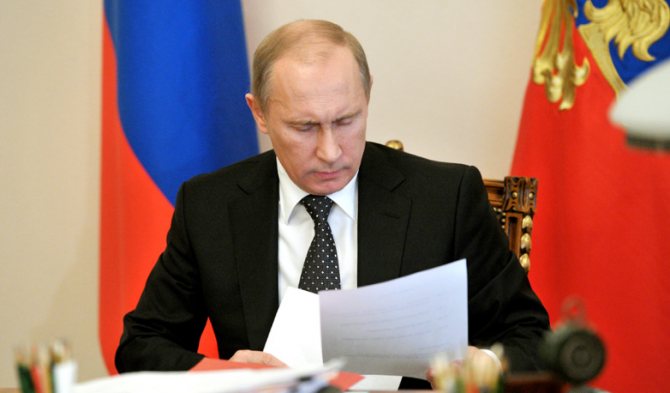

In addition to ensuring an uninterrupted process of heat delivery from the producer to the consumer, ETO will be responsible for the entire range of measures for the construction, reconstruction, modernization of heat supply facilities, as well as for their preparation for seasonal operation.
However, the maintenance of in-house networks, the installation of heat meters and the preparation of the heating unit for the heating season will remain under the jurisdiction of management companies and HOAs.
What law regulates the process of heating living quarters
Relations in the field of heat supply of residential premises are regulated at the federal level by the following legislative acts:
- Federal Law "On Heat Supply" dated July 27, 2010 No. 190-FZ.
- Decree of the Government of the Russian Federation "On the provision of utilities" No. 354 of May 06, 2011.
- GOST 30494-2011 "Indoor microclimate parameters" dated 01.01.2013.
The above documents define the relationship between owners and utilities, the timing of the beginning and end of the heating season, as well as the rules for the provision and calculation of utilities.
Who sets the date for the start of the heating season in Moscow
In Moscow, there are certain standards when they turn on heating according to the standards.
Heat is supplied under the condition that for 5 days the average daily air temperature is kept at the limit of 8 degrees and below. Despite the fact that it is still warm outside, the premises start to cool down quickly.
According to forecasters, such a temperature in the Moscow region is set no earlier than in the second decade of October.
Several years ago, a norm was adopted according to which the regional authorities have the right to make a decision on the premature switching on of heating, if there are grounds for this.
In Moscow, the Moscow United Energy Company is responsible for the start of the heating season.
Thus, MOEK cannot start supplying heat without receiving an appropriate order from the deputy mayor for housing and communal services.
Technically, heat can be supplied to one, specific house, however, this practice is not common. Schools and clinics, hospitals and kindergartens are connected in stages, and only then at home.
In the last place, heat is supplied to the enterprises - it depends on the degree of readiness of the organization itself.
According to available data, the average time to turn on heating in Moscow is mid-October.
If five or more days have passed, it is cold outside, and heating was still not supplied, you need to file a complaint against the management company. The problem can be technical or economic.
In the first case, after checking the pipes by a specialist and replacing the broken parts, the issue will be resolved.
Determining factors
The question of the beginning of the heating season is decided not by the utilities, but by the municipal authorities. They report this to the CHP and heating networks, and those to the housing and communal services and the management company. By the beginning of turning on the heat, utilities are required to prepare all heating systems for operation.
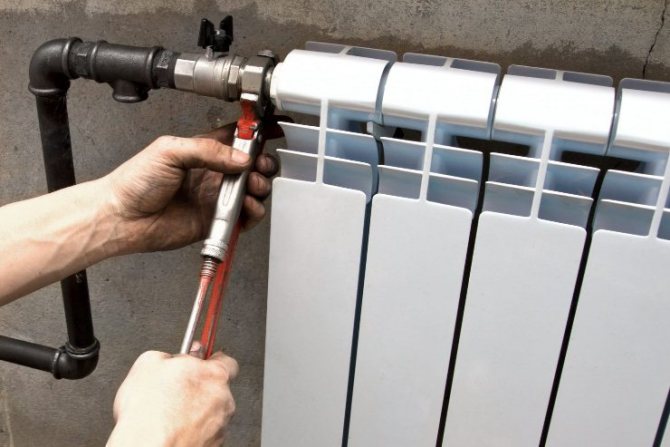

It is important to test the system before starting heating.
Once the beginning of the heating season was October, and this month the heat was turned on in all regions. Over time, the start date of the season began to be coordinated with local climatic conditions. In some regions of the country, winters last for 10 months, while in others it is almost constantly warm. Therefore, central heating in some places works for almost a year, and in others - only half a month.
The following conditions affect the start date of the season:
- According to the legislation, heat must be turned on when the air temperature does not exceed + 8ºC within 5 days.
- If weather forecasters report that the cold will last no more than a week, then the heat is usually not included.
- To determine the optimal start date of the season, the temperature is measured several times a day for 5 days.
Some people find that it is very beneficial for utilities to turn on the heat as late as possible. But they are wrong, since too late launching the system threatens to break it down.Non-working pipes in frost can burst, and utilities will have to pay for repairs at their own expense.
The end of the season is also an important moment that worries people. Heat in an apartment is a rather expensive public service, and residents want to know when the heating season ends and when they will stop charging for it.
It is impossible to predict the end of the heating season, since it is not known in advance how long the cold will last. The heat is also turned off according to temperature indicators for 5 days. When calculating the end date of the season, take into account the factors described above. But if warming came, for example, in February, then the heat will not be turned off, since it is clear that the cold will return. If the weather is warm, the temperature of the batteries will be reduced to a minimum.
What to do if not included
What should the consumer do if the heat supply company does not fulfill its duties? Try to force you to recalculate, because you did not receive the service, although you may have already made a payment for heat. An application must be submitted to the operating organization, which must send a specialist with a certified thermometer. If the temperature in the apartment is below the standard (20 ° C), you must recalculate it next month.
There are certain heating standards. They are the same for all regions, but the systems are turned on at a time when the average daily temperature in the city is maintained for several days at the rate set by the standards.
Heat values may differ depending on the type of room. In hospitals and kindergartens, heating is supplied earlier than in apartments.
If the standards are not complied with, an application should be submitted to the controlling organizations, after which a check will be carried out.
The heating was connected, but it's cold anyway
Unfortunately, there are often options when it should have been warm for a long time, but the batteries in the apartment are still cold... Receipts for payment come regularly at the same time. What to do in that unpleasant situation? Several factors can influence this situation.
Reasons for cold batteries:
- Ask your neighbors if everything is in order with them, then, perhaps, there are traffic jams in the networks. The problem is solved by contacting the Management Company.
- Analyze and check the condition of the batteries in the apartment. If they are old, painted many times, then they must be replaced.
- If the 2 previous paragraphs are not related to the cold in the dwelling, then this fact should be recorded and the Criminal Code should be invited for this. But it is not a fact that the company will want to go to the meeting and fulfill your request. In this case, invite at least two neighbors and write an application in any form, where you indicate all the requirements. Signatures of neighbors on the document serve as confirmation.
SanPiN (2. 1. 2. 1002 - 00) there are norms for the temperature regime in the apartment, which are considered acceptable (valid for 2020). If the indicators do not correspond, then you have every right to write a complaint and seek a solution to the problem.
| Type of premises in the building | Temperature regime | |
| Permissible | Optimal | |
| Living rooms (bedroom, nursery, study, living room) | +18 – 24 | +20 – 22 |
| Bathroom | +18 – 26 | +24 – 26 |
| Bathroom (toilet) | +18 – 26 | +19 – 21 |
| Kitchen (dining room) | +18 – 26 | +19 – 21 |
| Corridor between apartments | +16 – 22 | +18 – 20 |
| Staircase, landing at the entrance | +14 – 20 | +16 – 18 |
| Storage room (if available) | +12 – 22 | +16 – 18 |
Rules for drawing up a claim
The application should be addressed to the Criminal Code or the organization that provides heat, according to the contract concluded between the resident of the house and her. It is necessary to indicate that the services were not provided in an orderly manner. Be sure to ask to recalculate for the days when the apartment was not heated.
According to the established regulatory enactments, interruptions in heating are allowed only with an interval of 30 days a day (in total) no more than 16 hours at once. And then, if only the temperature in the apartment is fixed at a level not lower than +12 degrees.
If it is below +12, then "be patient" without heating is allowed only 8 hours. But when the rooms are no more than +10, then the lack of heating is possible for only 4 hours.
Watch out for hours during which there is no heating in excess of the set time. This period is paid, according to regulatory enactments, less by 0.15%.
Below are the rules for filing a claim:
- You need to write in several copies. The secretary accepting the application is required to date, stamp and sign your copy. the second document remains with the organization for review.
- It can be sent by mail, but only with a notification of receipt.
- A phone call with a complaint is also possible. But it is imperative to clarify the name of the listener, the number of your call recorded in a special log.
- In most cases, each contract specifies how to correctly submit an application, and there is also a list of options for how to make it more expedient.
In any case, it is extremely important to get a written response from the organization in order to have an evidentiary basis. The recalculation of payments should be done as early as next month.
If there are no shifts, the situation does not change or is a refusal received? There are other levers of influence:
- the prosecutor's office;
- court;
- Rospotrebnadzor;
- MEDIA.
You need to refer to the Housing Code of the Russian Federation, the Law on the Protection of Consumer Rights, the Civil Code of the Russian Federation, Resolution of the Government of the Russian Federation No. 354... The main task is not to engage in battle for many years, but to ensure that a recalculation is made and the flow of heat into the apartment is adjusted.




